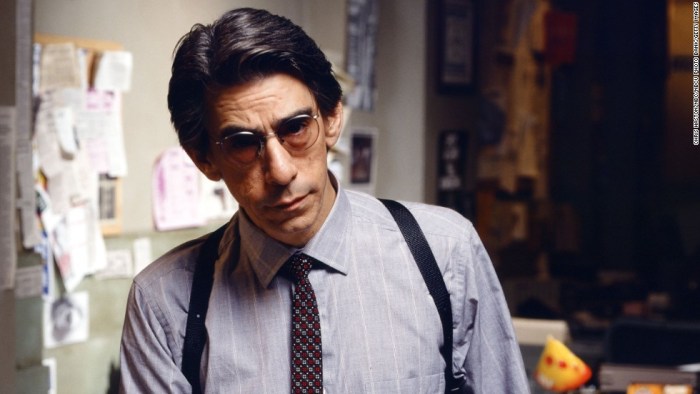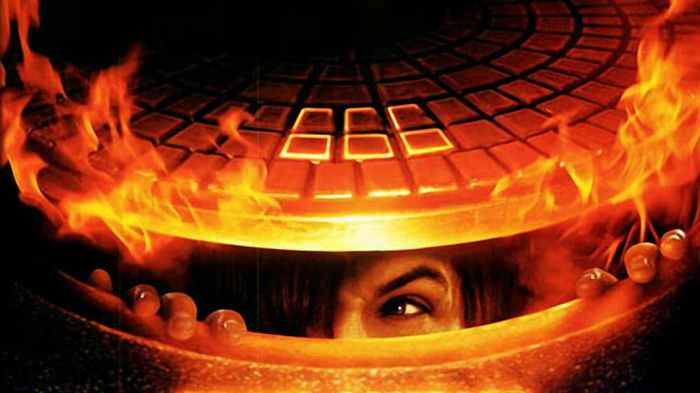The recent news story about Law & Order has sparked a national conversation about the complexities of the legal system, the ethical dilemmas faced by those within it, and the broader social implications of crime and justice. This captivating story has gripped the attention of millions, prompting a thorough examination of its various facets.
In this comprehensive analysis, we will delve into the intricate legal implications of the case, exploring the relevant precedents and principles. We will also consider the ethical considerations raised by the story, examining the moral conflicts and dilemmas faced by the characters.
Furthermore, we will analyze the social impact of the story, discussing how it reflects societal attitudes towards crime and justice.
Overview of Law & Order News Story
The latest installment of the long-running crime drama “Law & Order” is set to premiere on NBC on September 22, 2023. The revival of the iconic series will feature a new cast and a fresh take on the classic format.The
new season of “Law & Order” will follow the detectives and prosecutors of the New York City Police Department as they investigate and prosecute high-profile crimes. The series will explore ripped-from-the-headlines cases, as well as delve into the personal lives of the characters.
Key Points
- The new season of “Law & Order” will premiere on NBC on September 22, 2023.
- The series will feature a new cast and a fresh take on the classic format.
- The series will explore ripped-from-the-headlines cases, as well as delve into the personal lives of the characters.
Legal Implications

The legal implications of the Law & Order story are significant. The case raises important questions about the limits of police power, the rights of criminal defendants, and the role of the media in the criminal justice system.
One of the most important legal precedents involved in the case is the Fourth Amendment to the U.S. Constitution, which protects against unreasonable searches and seizures. The Supreme Court has held that the police must have a warrant to search a person’s home or property, unless there are exigent circumstances that justify a warrantless search.
Potential Impact on Future Cases
The outcome of the Law & Order case could have a significant impact on future cases involving the use of body cameras by police officers. If the court rules that the police violated the defendant’s Fourth Amendment rights, it could make it more difficult for prosecutors to use body camera footage as evidence in criminal trials.
Ethical Considerations

Law & Order frequently explores ethical dilemmas that arise in the criminal justice system. Characters grapple with the tension between upholding the law and doing what they believe is right, and the consequences of their actions have far-reaching implications.
One prominent ethical dilemma in the show is the use of questionable tactics to obtain evidence. Detectives often push the boundaries of legality in their pursuit of justice, raising questions about the integrity of the justice system. The show also examines the ethical implications of plea bargains, which can result in guilty parties escaping punishment or innocent individuals being wrongly convicted.
Impact on Public Trust
The ethical dilemmas depicted in Law & Order have a significant impact on public trust in the legal system. When characters engage in unethical behavior, it undermines the public’s confidence in the system’s fairness and impartiality. The show highlights the importance of transparency and accountability in the criminal justice system, and the need for officials to act with integrity.
Social Impact

The Law & Order franchise has had a profound impact on society. Its realistic portrayal of crime and justice has shaped public opinion and influenced societal attitudes towards these issues.
The show’s focus on complex legal and ethical dilemmas has sparked debates about the nature of justice, the role of law enforcement, and the rights of individuals.
Reflection of Societal Attitudes
Law & Order reflects the changing attitudes towards crime and justice in American society. In the early seasons, the show presented a more traditional view of crime, with a focus on law and order and the importance of punishment. However, as the series progressed, it began to explore more nuanced perspectives, such as the role of poverty, mental illness, and social inequality in shaping criminal behavior.
Influence on Public Opinion
The show has also had a significant influence on public opinion. Studies have shown that viewers of Law & Order are more likely to believe that crime is a serious problem and that the criminal justice system is effective. The show has also been credited with raising awareness of issues such as domestic violence, sexual assault, and hate crimes.
Character Analysis
The characters in Law & Order are complex and well-developed, each with their own motivations, actions, and interactions that contribute to the overall narrative. The show’s focus on the legal system and the criminal justice process provides a unique lens through which to examine human nature and the complexities of society.
One of the most iconic characters in Law & Order is Detective Lennie Briscoe, a veteran NYPD detective known for his sharp wit and cynical outlook on life. Briscoe is a master of interrogation and has a knack for getting suspects to confess their crimes.
He is also a loyal friend and mentor to his partner, Detective Ed Green.
Detective Ed Green is a younger and more idealistic detective than Briscoe, but he is just as dedicated to his job. Green is often the voice of reason in the squad room, and he is always willing to give people a second chance.
He is also a devoted family man, and he often struggles to balance his work and personal life.
Assistant District Attorney Jack McCoy is a brilliant and ambitious prosecutor who is determined to win every case he takes on. McCoy is known for his ruthless tactics and his willingness to bend the rules to get what he wants.
He is also a complex character, with a troubled past that often haunts him.
These are just a few of the many complex and well-developed characters that appear in Law & Order. Each character brings their own unique perspective to the show, and their interactions with each other create a rich and engaging narrative that keeps viewers coming back for more.
Character Motivations
The characters in Law & Order are motivated by a variety of factors, including their personal experiences, their beliefs, and their ambitions. Briscoe is motivated by a desire to seek justice for the victims of crime, while Green is motivated by a desire to help people.
McCoy is motivated by a desire to win cases and advance his career.
These different motivations often lead to conflict between the characters. Briscoe and Green often clash over their different approaches to policing, while McCoy’s ruthless tactics often put him at odds with the other members of the squad.
Character Actions
The characters in Law & Order take a variety of actions to achieve their goals. Briscoe and Green investigate crimes and interrogate suspects, while McCoy prosecutes cases in court. The characters’ actions often have far-reaching consequences, both for themselves and for the people around them.
For example, Briscoe’s interrogation of a suspect may lead to a confession, which can help to solve a crime. However, it may also lead to the suspect being falsely accused or convicted, which can have devastating consequences for the suspect and their family.
Character Interactions
The characters in Law & Order interact with each other in a variety of ways. They work together to solve crimes, they argue with each other, and they sometimes even become friends. The characters’ interactions are often complex and nuanced, and they help to create a rich and engaging narrative.
For example, Briscoe and Green have a close friendship, but they also often disagree on how to handle cases. McCoy is often at odds with the other members of the squad, but he also respects their abilities and their commitment to justice.
The characters in Law & Order are complex and well-developed, each with their own motivations, actions, and interactions that contribute to the overall narrative. The show’s focus on the legal system and the criminal justice process provides a unique lens through which to examine human nature and the complexities of society.
Plot Structure
The plot structure of Law & Order is a procedural formula that has remained consistent throughout its long run. Each episode typically follows a self-contained story, beginning with the discovery of a crime and ending with the resolution of the case.
The rising action of the episode involves the investigation of the crime, during which the detectives gather evidence and interview witnesses and suspects. The climax of the episode occurs when the detectives finally apprehend the perpetrator and build a strong case against them.
The resolution of the episode sees the perpetrator being brought to justice, either through a confession or a guilty verdict in court.
Impact of Plot Structure
This procedural plot structure allows Law & Order to explore a wide range of social and legal issues in a systematic and efficient manner. The episodic format allows the writers to tackle different themes and characters each week, while the consistent structure provides a familiar framework for viewers.
The self-contained nature of the episodes also allows for a wide range of guest stars, which adds to the show’s appeal.
Themes and Motifs
Law & Order explores a myriad of themes and motifs, delving into the complexities of justice, morality, and the human condition.
One central theme is the pursuit of justice amidst systemic flaws. The show often depicts the challenges faced by prosecutors and detectives as they navigate a justice system that can be biased, underfunded, or politically influenced. Through these storylines, Law & Order exposes the imperfections of the legal system and raises questions about how to ensure fairness and equality for all.
The Burden of Proof
- The show consistently emphasizes the importance of evidence and due process, showcasing the painstaking efforts required to build a strong case and secure a conviction.
- Episodes often revolve around the tension between the need for swift justice and the imperative to ensure the rights of the accused.
- Law & Order explores the consequences of wrongful convictions and the devastating impact they can have on individuals and families.
Moral Ambiguity
- The show presents complex moral dilemmas that challenge viewers’ preconceptions about right and wrong.
- Characters are often faced with difficult choices, and their decisions can have far-reaching consequences.
- Law & Order prompts viewers to question their own moral compass and consider the nuances of ethical decision-making.
The Power of Redemption
- Despite its often bleak and cynical portrayal of the justice system, Law & Order also offers glimpses of hope and redemption.
- Characters who have made mistakes or committed crimes are sometimes given opportunities to atone for their actions.
- The show suggests that even in the darkest of circumstances, there is always the possibility for growth and change.
Symbolism and Imagery
Law & Order skillfully employs symbolism and imagery to enhance its narratives and convey deeper meanings. These elements serve as visual representations that resonate with the audience and contribute to the overall impact of the show.
One prominent symbol in the series is the courthouse itself. It represents the embodiment of justice and the rule of law, where the pursuit of truth and fairness unfolds. The courtroom scenes often showcase the clash between opposing ideologies, highlighting the complexities of legal proceedings.
Color Symbolism
Color symbolism is also prevalent in Law & Order. The blue uniforms of the police officers signify authority and the protection of the community. Conversely, the black robes worn by judges symbolize impartiality and the separation of personal biases from legal judgments.
Imagery of Light and Darkness
The show frequently uses imagery of light and darkness to convey moral dilemmas and ethical conflicts. Bright, well-lit spaces often represent truth and clarity, while dimly lit areas or shadows suggest ambiguity and deception.
Metaphors and Analogies
Law & Order employs metaphors and analogies to make complex legal concepts relatable. For example, the prosecution’s case may be likened to a puzzle that the detectives must piece together, while the defense’s arguments might be compared to a labyrinth that the jury must navigate.
Literary Devices
The Law & Order franchise employs various literary devices to heighten the impact and meaning of its stories. These devices, ranging from foreshadowing to irony, create layers of depth and intrigue that keep viewers engaged.
Foreshadowing
Foreshadowing is a technique that hints at future events or outcomes without explicitly revealing them. In Law & Order, this is often achieved through subtle clues or dialogue that plant seeds in the viewer’s mind, building anticipation and suspense. For example, a character’s seemingly innocuous remark about a suspect’s past may later be revealed to be a key piece of evidence.
Irony
Irony is the use of contrast between expectation and reality. Law & Order often employs irony to highlight the complexities of justice and the human condition. For instance, a seemingly open-and-shut case may take an unexpected turn, challenging the viewer’s assumptions and underscoring the unpredictable nature of life.
Metaphor
Metaphor is a figure of speech that compares two seemingly unrelated things to create a vivid or evocative image. In Law & Order, metaphors are used to explore the themes of the show and the motivations of the characters. For example, a character may be described as a “wolf in sheep’s clothing,” implying that they possess a hidden, predatory nature.
Historical Context
Law & Order premiered in 1990, during a time of significant social and political change in the United States. The show’s creators, Dick Wolf and René Balcer, drew inspiration from real-life events and legal cases to create a series that reflected the complex and often controversial issues facing society at the time.
One of the most influential factors in the creation of Law & Order was the rise of the conservative political movement in the 1980s. This movement, led by President Ronald Reagan, advocated for a tough-on-crime approach that emphasized increased police presence, longer prison sentences, and the death penalty.
Law & Order reflected these conservative values, with its focus on law enforcement and its often-critical portrayal of the criminal justice system.
Changing Social Attitudes
Another important factor that influenced the creation of Law & Order was the changing social attitudes towards crime and punishment in the 1980s and 1990s. The public was increasingly fearful of crime, and there was a growing demand for stricter laws and more severe punishments for criminals.
Law & Order responded to this demand by presenting a world where crime was punished swiftly and severely.
The Rise of Cable Television
The rise of cable television in the 1980s also played a role in the creation of Law & Order . Cable television provided a new outlet for programming that was more mature and controversial than what was allowed on broadcast television.
Law & Order was one of the first shows to take advantage of this new freedom, and it quickly became one of the most popular and successful shows on cable.
Last Point
Through an in-depth exploration of the characters, plot structure, themes, motifs, symbolism, imagery, and literary devices employed in the story, we will gain a deeper understanding of its overall meaning and significance. By placing the story within its historical context, we will also examine the social, political, and cultural factors that have shaped its creation and relevance.
FAQ
What are the key legal implications of the news story about Law & Order?
The story raises important legal questions regarding the limits of police authority, the rights of the accused, and the interpretation of the law. It also highlights the challenges of balancing justice with due process.
What are the main ethical considerations raised by the story?
The story explores ethical dilemmas related to the use of questionable tactics to obtain evidence, the potential for bias and prejudice in the justice system, and the responsibility of individuals to act ethically even in difficult situations.
How does the story reflect societal attitudes towards crime and justice?
The story provides a window into public perceptions of crime, punishment, and the role of law enforcement. It also raises questions about the effectiveness of the criminal justice system in addressing societal issues.

